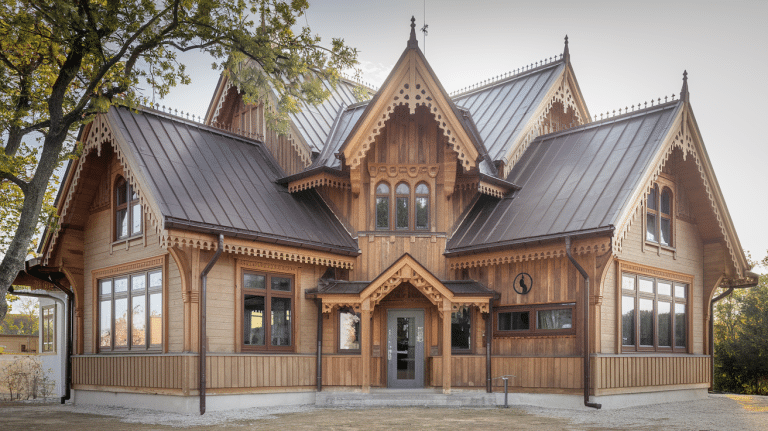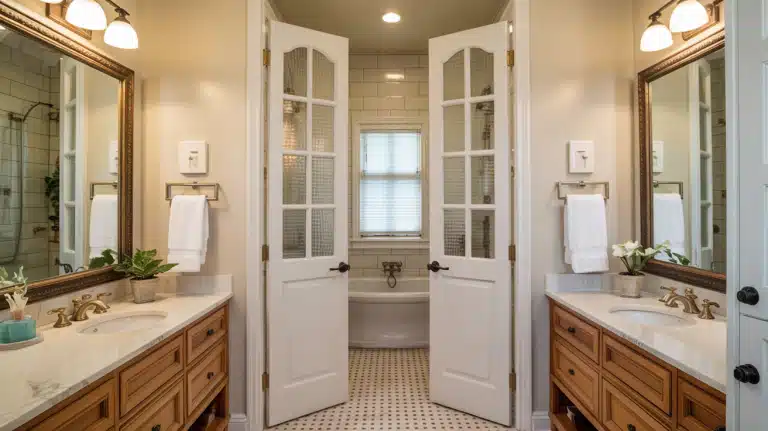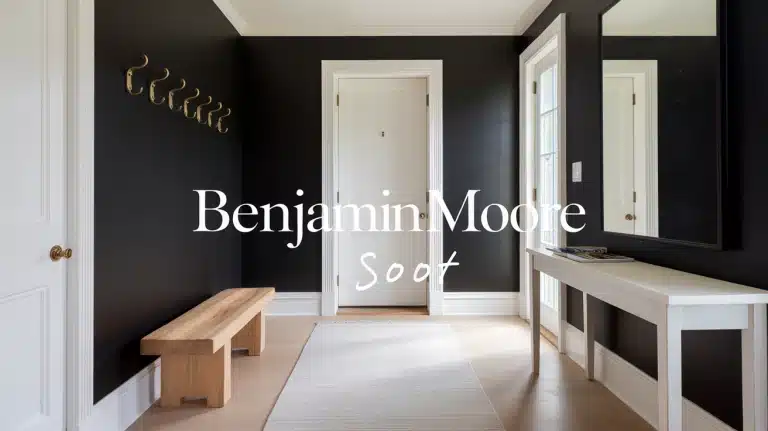Easy Guide: How to Hang a Hammock Indoors
Convert your living space into a floating sanctuary with an indoor hammock—your cocoon of tranquility.
Beyond mere furniture, this suspended retreat offers an escape from the world’s gravitational pull, its rhythmic sway triggering deep relaxation responses in your brain.
While seemingly complex, proper installation requires just a few precise steps and common tools. This guide unlocks the secrets of secure mounting across different surfaces, from concrete fortresses to wooden havens.
Learn why thousands are reclaiming their indoor spaces with this ancient relaxation technology. Your perfect suspended retreat awaits—no trees required.
Guide to Hanging a Hammock Indoors
Tools and Materials Needed
| Category | Items |
|---|---|
| Hammock Components | • Hammock • Two suspension bolts (ring bolts) • Two suspension ropes • Two carabiners |
| Power Tools | • Electric drill • Impact/hammer drill (for concrete or brick) |
| Drill Accessories | • 7mm wood drill bit • 12mm masonry drill bit • Masking tape (to mark drill depth) |
| Measurement & Marking | • Measuring tape • Pencil |
| Safety Equipment | • Safety glasses • Work gloves • Ladder or stable chair • Vacuum cleaner |
| Detection Tools | • Cable detector |
| Installation Materials | • Plastic wall plugs (for concrete) • Injection mortar with anchor sleeves (for perforated brick) • Steel wire brush (for cleaning holes) • Repair putty (for fixing incorrect holes) • Screwdriver |
Step 1: Understand the Four Basic Rules for Hanging a Hammock
Master the four essential hammock-hanging rules before installation. Ensure your hammock forms a banana shape with approximately 30 degrees of sag. Position both ends at identical heights for balanced comfort.
Adjust the lowest point to knee height (about 50 cm) for safety and accessibility. Allow sufficient space around the hammock for natural swinging.
These principles apply to both wall and ceiling installations, with American-style hammocks being the only exception. Following these guidelines creates the optimal balance of comfort, safety, and functionality.
Step 2: Choose Between Wall or Ceiling Mounting
Select the mounting style that best suits your space. Wall mounting works with any hammock style but may obstruct room flow.
Ceiling mounting creates a stylish centerpiece while taking up less space due to increased sagging. However, ceiling installation requires a wider hammock for crosswise lying and typically accommodates only one person comfortably.
Consider your room layout, design preferences, and hammock type before deciding which approach will create your ideal indoor retreat.
Step 3: Determine If You Have Enough Space
Assess your space by having friends hold the hammock according to the four basic rules. Test different locations while maintaining clearance from furniture and obstacles.
Once you find a suitable position, visualize where the suspension ropes would extend—straight to the walls for wall mounting or upward for ceiling mounting.
These extension points mark your future drilling locations. This hands-on approach eliminates complex calculations and provides an accurate preview of how your hammock will fit in your space.
Step 4: Assess Wall or Ceiling Strength
Verify that your mounting surface can safely support the hammock’s weight. Concrete provides ideal support for ceilings—confirm by knocking to ensure it doesn’t sound hollow.
For walls, distinguish between load-bearing structural walls and decorative partitions. Load-bearing walls sound solid when knocked and typically have thicker door frames (over 12 cm).
Consult a building expert if uncertain. Avoid mounting on perforated bricks, lightweight concrete, or drywall partitions without proper reinforcement. This critical assessment prevents structural damage and ensures installation security.
Step 5: Mark the Drilling Points
Mark precise drilling points with friends holding the hammock. For wall mounting, extend the suspension rope toward the wall and mark where it meets the surface, positioning it in the upper third for adjustment flexibility.
For ceiling mounting, extend both ropes upward to their ceiling intersection points, maintaining sufficient distance between marks.
Before drilling, use a cable detector to locate any electrical wires, water pipes, or reinforcement steel to prevent damage during installation.
Step 6: Drill Holes for Your Wall/Ceiling Material
Adapt the drilling technique to your specific building material. For wood, use a 7mm bit for a 60mm hole. For concrete or solid brick, use a 12mm masonry bit for an 87mm hole.
For perforated brick, create a 95mm hole without the hammer function. Always mark drill depth with tape, wear safety gear, and position a vacuum nearby to capture dust.
When drilling concrete ceilings, pre-drill with a smaller bit first and stop immediately if you hit reinforcement steel, repositioning several centimeters away.
Step 7: Install the Suspension Bolts
Mount the suspension hardware according to your surface material. For wood, screw 10mm ring bolts directly into 7mm pre-drilled holes until flush.
For concrete or solid brick, insert plastic wall plugs before screwing in ring bolts. For perforated materials, use injection mortar with anchor sleeves—clean holes thoroughly, insert sleeves, fill with mortar, then immediately screw in bolts.
Allow the mortar to harden for approximately two hours before removing the excess. The appropriate installation method ensures that your mounting points safely support both the hammock and the occupant’s weight.
Step 8: Attach the Suspension Ropes
Connect your suspension system by forming a rope loop and attaching it to the installed bolts. Choose between direct hammock attachment using a Becket Hitch knot or the carabiner method using a Clove Hitch knot.
Direct attachment works well for portable setups, while carabiners protect hammock loops from wear and enable quick setup.
Both knot styles allow height adjustment and tighten under load. Ensure both sides are adjusted symmetrically for proper hammock positioning and balanced weight distribution.
Step 9: Make Final Adjustments and Safety Check
Fine-tune your setup for optimal comfort and security. Adjust rope length until both hammock ends hang at equal heights with the lowest point at knee level.
For pre-equipped ropes with carabiners, use temporary knots to test positioning before finalizing with an Anchor Bend.
Leave sufficient excess rope for future adjustments. Test installation strength by gradually applying weight to the hammock edge, ensuring the suspension system holds securely and all knots tighten appropriately under load.
Video Tutorial
I want to give credit to Hamacama for their informative video, which served as a reference for this guide.
Hammock Styling Ideas: Design Your Retreat
Once installed, your hammock becomes more than a seat—it’s an extension of your space, your mood, and your design voice. Whether you lean boho or modern, styling your indoor hammock transforms it into a signature feature of your room. Here’s how to curate your suspended sanctuary:
1. Boho Bliss
Layer your hammock with chunky knit throws, tasseled cushions, and macramé detailing. Surround it with trailing pothos or string-of-pearls plants, then add a woven jute rug and fairy lights to complete the look. Earth tones and handmade textures make this style effortlessly dreamy.
Best For: Cozy corners, artistic souls, and plant lovers
2. Minimalist Zen
Stick to clean lines and neutral palettes—think crisp white, taupe, or charcoal hammocks. Pair with a single linen pillow and a nearby bamboo side table for tea or books. Avoid clutter; the focus is on calm, spacious energy.
Best For: Small spaces, meditation zones
3. Coastal Calm
Choose a hammock in soft blues or sandy beiges accented with seashell garlands or driftwood art. Sheer curtains and soft natural lighting evoke the serenity of a beach house—minus the sand.
Best For: Breezy spaces, sun-soaked rooms
4. Scandinavian Warmth
Layer with light-colored wool blankets and textured pillows. Add a soft sheepskin underneath and warm wood tones around it. This style is about comfort and contentment in every detail.
Best For: Reading nooks, quiet bedrooms
5. Urban Industrial
Opt for a dark canvas or leather-look hammock with matte black carabiners and metal accents. Surround with exposed brick, Edison bulbs, and raw wood for a grounded, edgy feel.
Best For: Lofts and modern apartments
Top Tips for Caring for Your Indoor Hammock
A little upkeep goes a long way—these simple tips will help your hammock stay safe, strong, and serene for years to come.
Regular Inspection for Safety
Check your hammock monthly for signs of wear. Look for frayed ropes, loose knots, or weakened carabiners. Ensure all hardware is secure and free from cracks or shifting. Address any issues immediately to maintain safety.
Proper Cleaning Techniques
Clean based on the hammock material. Cotton should be hand-washed gently with mild soap; synthetic types can be wiped clean. Use a soft brush for rope hammocks. Avoid machine washing or heat drying to preserve strength and shape.
Weight Management
To avoid damage, stick to the hammock’s weight limit. Remember, swinging adds extra stress. Distribute the weight evenly and watch for creaking or sagging. Wall-mounted setups typically support less than ceiling mounts—check your specs.
Seasonal Adjustments
Weather affects tension. In humid months, tighten ropes to compensate for stretching; in dry seasons, loosen them to prevent stress. Avoid placing hammocks near HVAC vents and use fabric protectors in high-humidity areas.
Protecting Against UV Damage
Keep your hammock out of direct sunlight to prevent fading and fiber breakdown. Use UV-filtering window films or sprays, rotate the hammock periodically, and store it when not in use for long periods to avoid sun damage.
Avoid These Common Hammock Setup Mistakes
| Issue to Avoid | Potential Consequences | Prevention Measures |
|---|---|---|
| Mounting on non-load-bearing walls | Wall damage, collapse, personal injury | Use a cable detector, knock test, and consult building plans |
| Exceeding weight capacity | Suspension failure, falls, structural damage | Check manufacturer specifications, limit occupants |
| Improper knot tying | Slippage, unexpected drops, uneven hanging | Learn correct knots (Becket Hitch, Clove Hitch, Anchor Bend) |
| Drilling without checking for pipes/wires | Electrical shock, water damage, service disruption | Always use a cable detector before drilling |
| Hanging too high | Difficult access, dangerous falls | Maintain proper knee height (50cm) for lowest point |
| Using incorrect hardware for wall type | Pullout, wall damage, hammock collapse | Match mounting hardware to specific wall material |
| Insufficient cleaning/maintenance | Material deterioration, mold growth, staining | Regular cleaning, inspection, proper storage |
| Sharp objects near hammock | Fabric tears, rope damage, structural compromise | Create a clear zone around the entire hammock area |
| Excessive swinging | Strain on mounting points, hardware loosening | Moderate movement, regular hardware checks |
| Improper storage when not in use | Deformation, stretching, material weakness | Store loose, dry, and clean when not using regularly |
Conclusion
Your trip to hammock nirvana culminates in that magical moment when you first sink into your perfectly hung indoor retreat.
The gentle arc cradles your body while the subtle swaying lulls your mind—changing ordinary rooms into extraordinary sanctuaries.
Beyond decorative appeal, your suspended haven redefines relaxation, offering therapeutic benefits to both body and spirit. The careful installation process rewards you with a safe, durable sanctuary that withstands the test of time and use.
Remember that your hammock grows with your space—adjust seasonally, inspect regularly, and clean appropriately to preserve its magic. You’re not just a home improvement project; you’ve unlocked an ancient secret to everyday bliss.
Your gravity-defying oasis awaits within—suspend yourself and Reconnect with what true relaxation means.






















pin up: pinup az – pin up azerbaycan